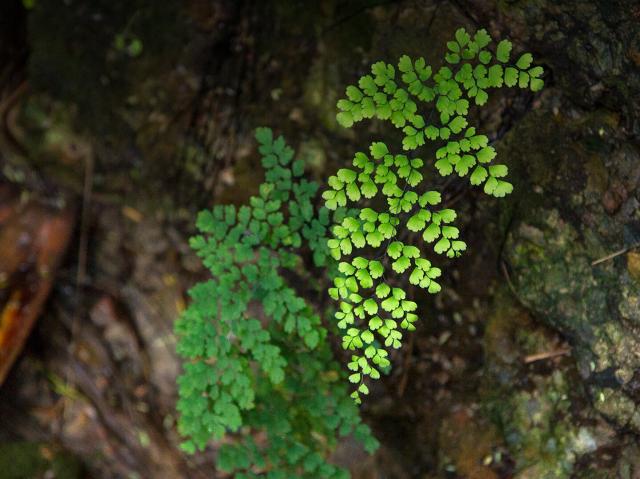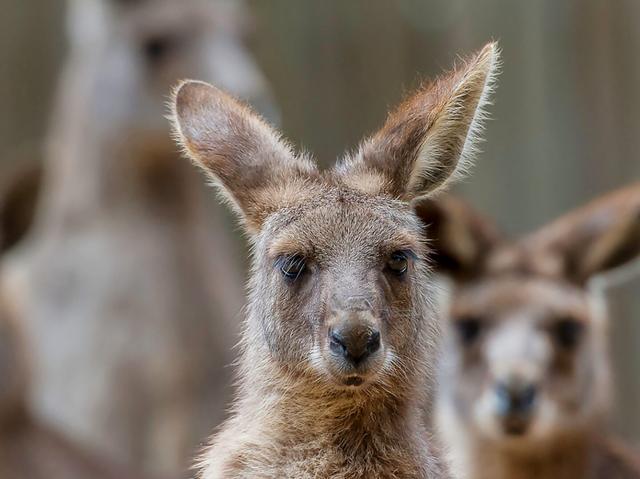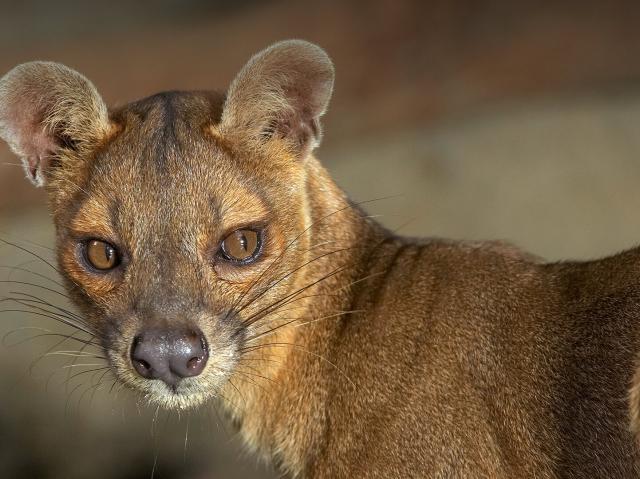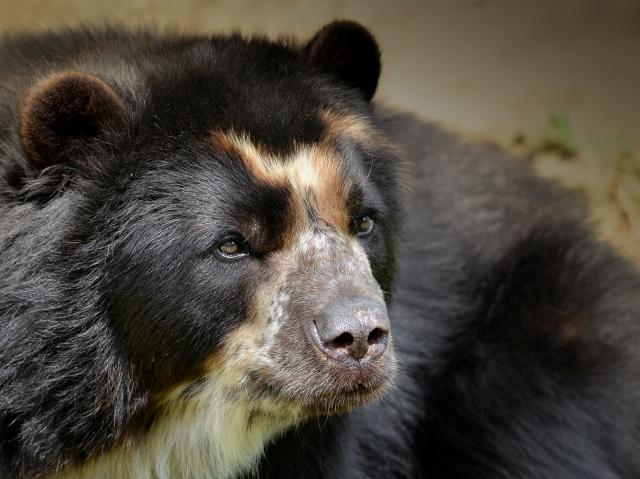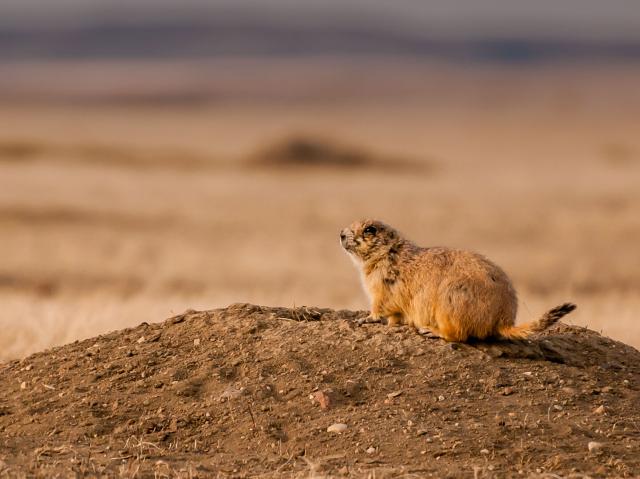
Dragonfly and Damselfly

- CLASS: Insecta (Insects)
- ORDER: Odonata
- FAMILIES: 30
- GENERA: About 600
- SPECIES: 5,500

ABOUT
Meet another kind of dinosaur: When you think of dinosaurs, you might think of those found in the movie Jurassic Park. But there are many other prehistoric animals that are still around today. And some lived even before dinosaurs first appeared: dragonflies and damselflies! These two insects are in the same taxonomic family, Odonata. They look pretty similar and are often called odonates.
Brilliant, iridescent colors and interesting hovering flying style have made dragonflies and damselflies popular insects for years. Some countries, such as Japan, represent the dragonfly in their art and culture. But more importantly, these insects help tell us about the health of an ecosystem. Their young can be affected by any changes in water flow and water pollution. More dragonflies in an area may indicate a healthier water ecosystem.
One thing you notice right away about dragonflies and damselflies is their wonderful array of colors. Dragonflies come in all sorts of colors like yellow, red, brown, and blue; sometimes the wings have brown spots and bands. Male damselflies typically have iridescent wings and some type of colorful blue, green, or purple body, while the females usually have a golden brown color, even on their wings.
Dragonflies generally have a thicker and shorter body than damselflies, which are slim. Both have large compound eyes. Yet damselflies have a separation between the eyes while dragonflies’ eyes are close together. Their compound eyes have up to 30,000 lenses, providing them with excellent vision. Talk about having one of the best pairs of glasses!
Damselflies have legs in front of their body for grasping prey. Dragonflies have strong, biting mouthparts to eat with.
Both dragonflies and damselflies have two pairs of wings. These wings are thin and sheer, with small veins that crisscross to add strength. Dragonflies can beat their wings together or individually. Like a helicopter, this lets them turn in mid-air, hover, and fly backward. Some dragonflies can even reach speeds of up to 20 miles per hour (30 kilometers per hour).
Damselflies, on the other hand (or wing!) are kind of clumsy in the air. They have weak wing muscles and beat their wings at different times, so they are slow and look a bit awkward when they fly. Damselflies rest with their wings together but not folded. Dragonflies rest with wings apart. This is a unique trait and a result of their aerial lifestyle. Both damselflies and dragonflies have no folding mechanism, as they always need to be ready to launch at a moment’s notice!
HABITAT AND DIET
Odonates live near fresh water. It is the place where the females lay eggs and where the young can develop. They live in many different habitats all over the world, except the polar regions, which are too cold and have too much frozen water. Before odonates start their day, they must warm up, not by doing stretching and bending but by exposing their body to the sun.
You may notice that on cloudy or overcast days, odonates are rarely seen because they need some bit of heat to function. In the mornings, they rest on various plants while basking in the sun to absorb heat or make their own heat by shaking their wings. Once their body is warm, it's take-off time. Dragonflies and damselflies spend most of the rest of their day flying around to catch food. In fact, they are almost always moving. How exhausting! If they stop zipping around, they could end up as a snack for some other animal.
Being a good-sized insect, odonates have to watch out for predators. These include fish (bass, in particular), water beetles, ducks, water shrews, and water bugs. Most birds are not fast or agile enough to catch dragonflies. Odonate nymphs (young) are the most vulnerable. A lot of them become a meal for ducks while they are growing or emerging into adulthood.
Odonates are carnivores, but they don’t eat the kind of meat we do. It is not chicken and beef for breakfast, lunch, and dinner but rather insects! They chase smaller flying insects like mosquitoes and gnats. This makes them helpful to humans by keeping those pesky insects that could carry diseases in check. Once the dragonfly or damselfly has its prey, it eats it in midair. If the prey is a larger insect, the odonate lands on the nearest branch to gobble it up!
FAMILY LIFE
Courtship on the wing: The courtship of dragonflies and damselflies often requires aerial contests, as males fight over territory. Females only mate with males that have a territory to defend that is close to a body of water. In both damselflies and dragonflies, the male often guards the female after mating while she lays her eggs in the water. The emperor dragonfly and the common blue damselfly lay their eggs onto the stems of pondweeds to protect them from being eaten by fish.
The larva that hatches out of the egg is called a nymph. It has wing pads but no functional wings and breathes underwater with gills. The nymph feeds on other insect larvae, tadpoles, and small fish. It is stocky and shorter than the adult and is usually a green-brown color to help blend in with its watery habitat. Water temperature can determine what time of year the eggs hatch and how quickly the nymph grows and molts.
Like its parents, the nymph is a carnivore. It grabs prey with a unique mouthpart called a mask, which can shoot out and snatch prey in its pincers. All nymphs go through a molting sequence that can last between a few weeks to several years, depending on the species. Molting is how insects grow. During a molt, the old exoskeleton sheds to reveal the body that has grown larger underneath it.
Nymphs molt 10 to 20 times, and the time between molts is called an instar. Eventually, the nymph sheds for the last time and emerges as a full-grown adult dragonfly or damselfly. It has a long, skinny body, transparent wings, compound eyes, and two sharp mouthparts. The new adult needs to allow time for its new, soft exoskeleton to dry and harden before it can fly. During this time it is vulnerable to predators.
CONSERVATION
Whether dragonflies or damselflies are favored for their color, aerial acrobatics, or beauty, they are key insects in our ecosystems. They help us track the health of our fresh bodies of water and serve as an important link in the food web. Dragonflies and damselflies protect us from other pesky and infectious insects and bring us a sense of beauty in nature. You could say they are the prettiest dinosaurs still living!
By supporting San Diego Zoo Wildlife Alliance, you are our ally in saving and protecting wildlife worldwide.
LIFE SPAN
Nymph life stage lasts from a few weeks to several years, depending on species; adult life span is usually only a few weeks
YOUNG
Number of eggs laid: From hundreds to thousands, depending on location
Incubation period: 5 days to several months, depending on water temperature
SIZE
Length: .6 to 6 inches (1.5 to 15 centimeters), depending on species
Wingspan: .8 to 7.1 inches (20 millimeters to 18 centimeters), depending on species
FUN FACTS
Dragonflies and damselflies were on Earth more than 200 million years ago, even before the dinosaurs.
The largest dragonfly to ever live had a wingspan of 28 inches (70 centimeters). Found in the fossil record of the Permian period, it was also the largest insect in history.
Dragonflies have some interesting common names, such as snake doctor, devil’s darning needle, goddess’ horse, water witch, and mosquito hawk.
People in parts of Asia eat dragonflies and their larvae.
Some people used to believe that a dragonfly could sew someone’s lips together so they couldn’t tell a lie!





